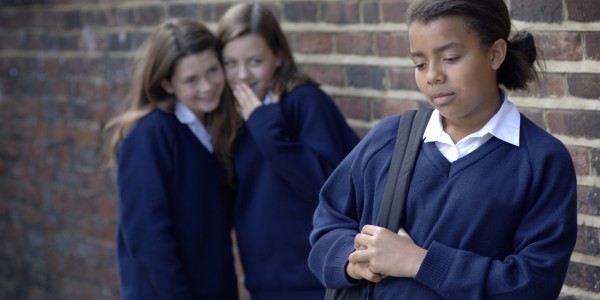
Just recently, I was asked to give a talk in a school because a certain child – let’s call her ‘Niamh’ – was causing a lot of problems as a result of her bullying behaviour. I had barely put up my first slide in the presentation when the first sob emanated from Niamh. To my utter amazement, Niamh’s sobs continued unabated throughout the talk as she explained loudly at every opportunity how she was the victim of terrible bullying within the school. The palpable hostility from everyone else in the room demonstrated clearly what Niamh’s peers thought of her crocodile tears, and yet Niamh was obviously in great anguish and evidently thought of herself as a victim of bullying.
‘Niamh’ was the classic ‘cry-bully’; driven to dominate and control every situation, this type of bully will often spend their time and energy convincing themselves and everyone they know that they are the victim and not the bully. The controversial journalist Julie Burchill succinctly describes this type of bully as ‘a hideous hybrid of victim and victor, weeper and walloper’. When a ‘cry-bully’ is accused of bullying, they instinctively feel the loss of control and automatically ratchet up the tension and the confusion by declaring themselves to be the true victim.
Filled with self-pity, justification and self-absorption, these kids seldom worry about the damage that they are causing others; but instead, they believe that their hurt is more important than everyone else’s. To make matters worse, their sense of being a victim becomes a crutch and a reason to justify future cruel behaviour.

Sadly, many targets of bullying are determined to remain with the same group of friends – even when these friends have shown themselves to be fair-weather friends; however, when the child realises that the bully is simply a control-freak, then often the child is more willing to move away from the damaging dynamic. If your child is the target of a cry-bully, it can be very helpful if you teach your child about the complex motivations of this type of bullying. The more your child understands that the ‘cry-bully’ is driven to control the situation, the sooner your child will realise that it isn’t their fault and that the weakness lies in the cry-bully’s need to dominate the situation. This knowledge will free your child to eventually move beyond the ‘cry-bully’ towards calmer, less complicated friends.
Although it is very hard for the school authorities to figure out what is happening when there is a ‘cry-bully’ involved – and so the parents will often feel furious by the lack of progress in dealing with the bullying – on the plus side, this type of bully is often easier to handle than other types. Often highly emotional, the ‘cry-bully’ is much more easily cowed by a show of strength than other bullying personalities; and if your child can either learn to stand up to them or else build up a network of upstanders who are willing to step up for them, the ‘cry-bully’ will very quickly retreat, ditch the bullying and try to gain control by identifying as a victim instead.

The key to helping the target of a ‘cry-bully’ is to figure out who in the social group is willing to stand shoulder-to-shoulder with your child. These potential ‘upstanders’ are often found beyond the target’s friends – if the target’s friends were helpful, then they would have stepped in already. There are often a few kids who are willing to stand up for what they see as morally right - the only problem is that children are often so dazzled by the popular kids that they often miss these morally engaged kids. The parents need to help the child to figure out who these kids are, and how they should ask them for help to stand up to the ‘cry-bully’. While it may not be easy for the child to identify these potential ‘upstanders’, it can be very helpful for their emotional skills, and it will be a gift that will last them their whole lifetime.
Sadly, bullying takes some time to overcome; it will not be sorted in a week. However, if it is managed properly, the child can emerge from the bullying with greater strength, a deeper understanding of human nature, and better boundaries and self-protective instincts than they would have had previously. These traits will help them face down future challenges and develop their resilience and their self- confidence so that they may even look back on the bullying and declare themselves thankful that they learnt these life-lessons at such an early age.






